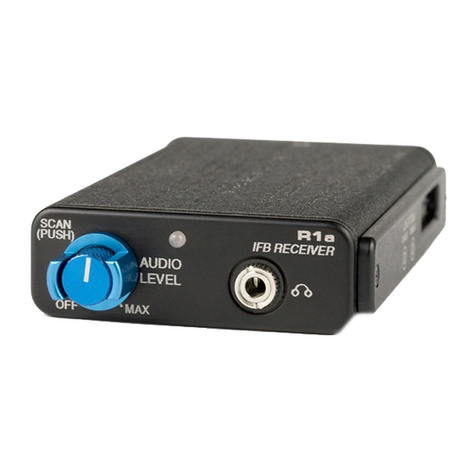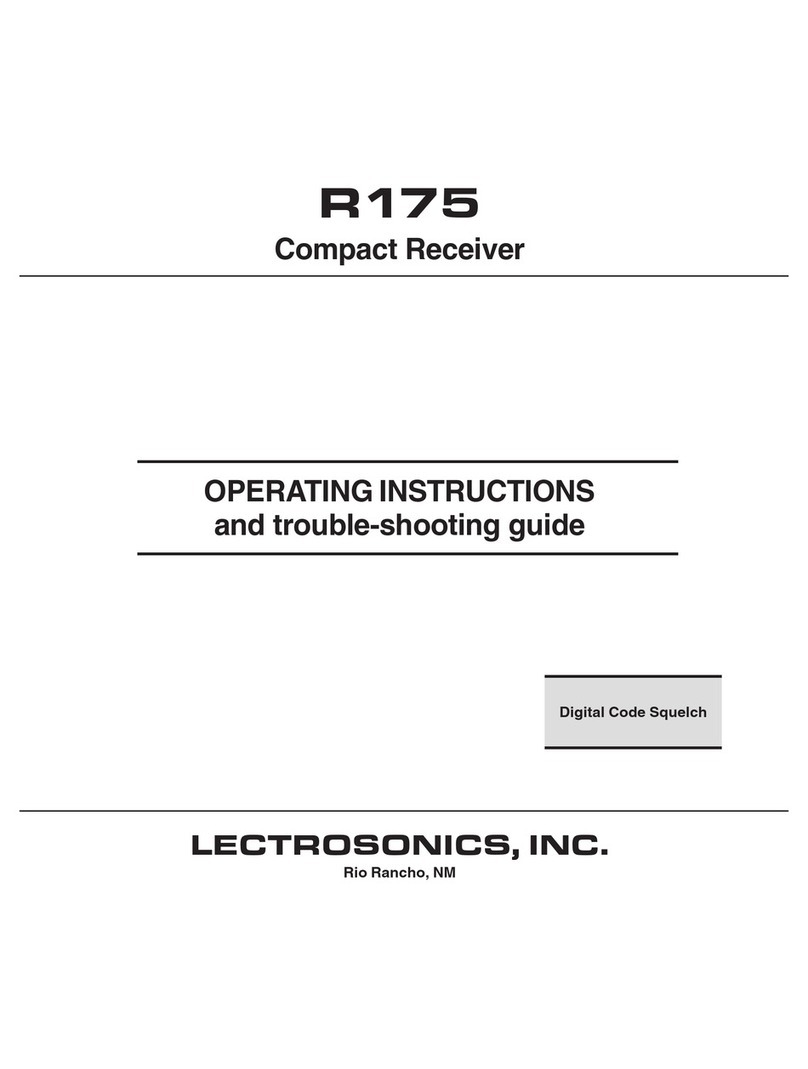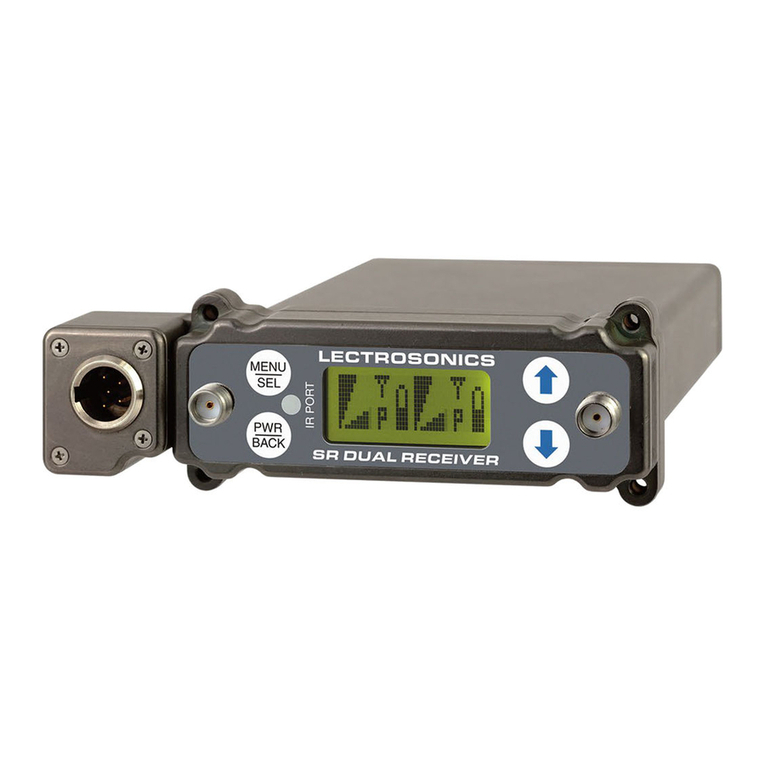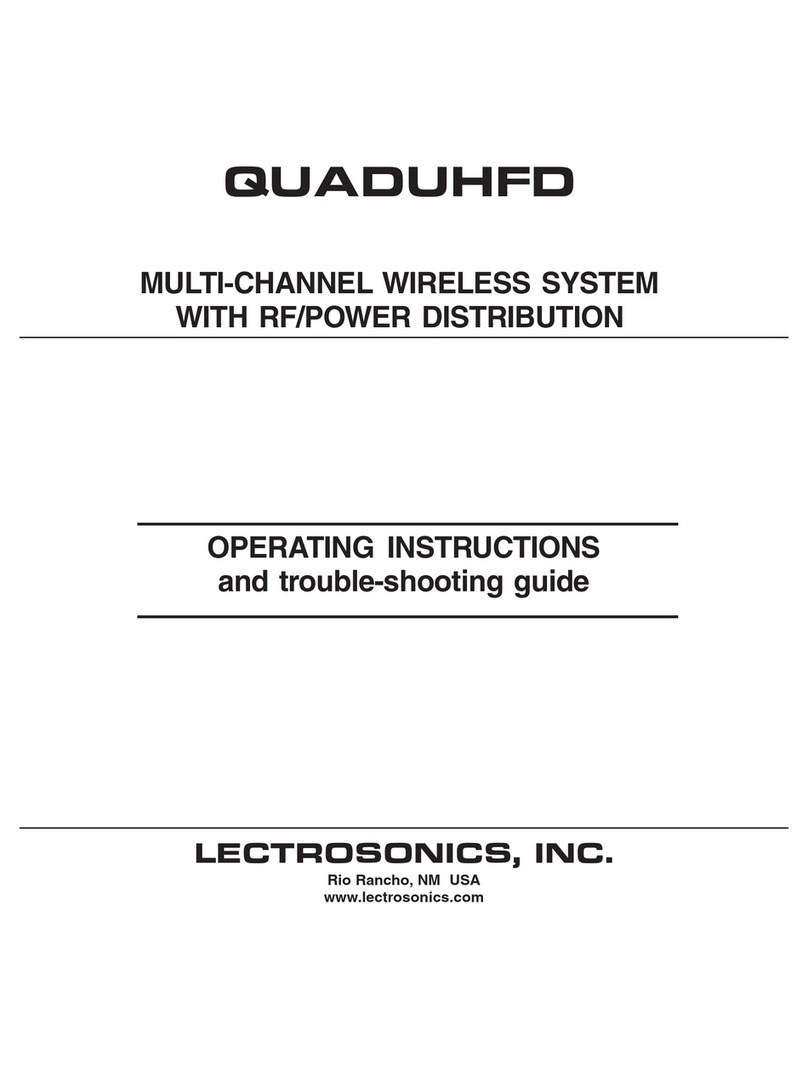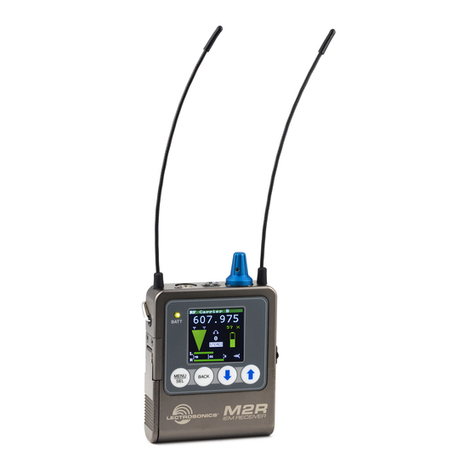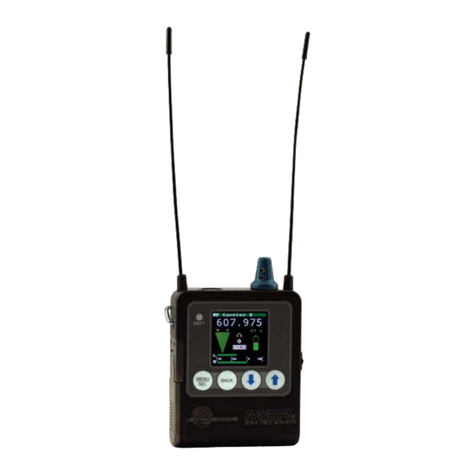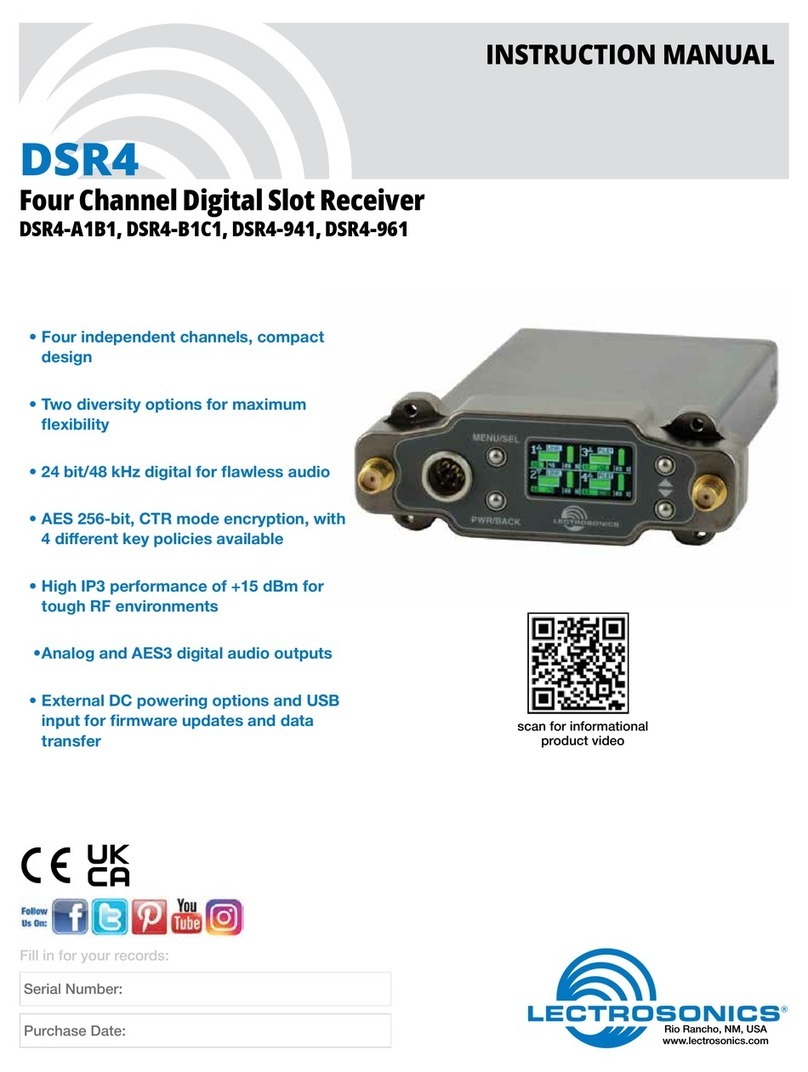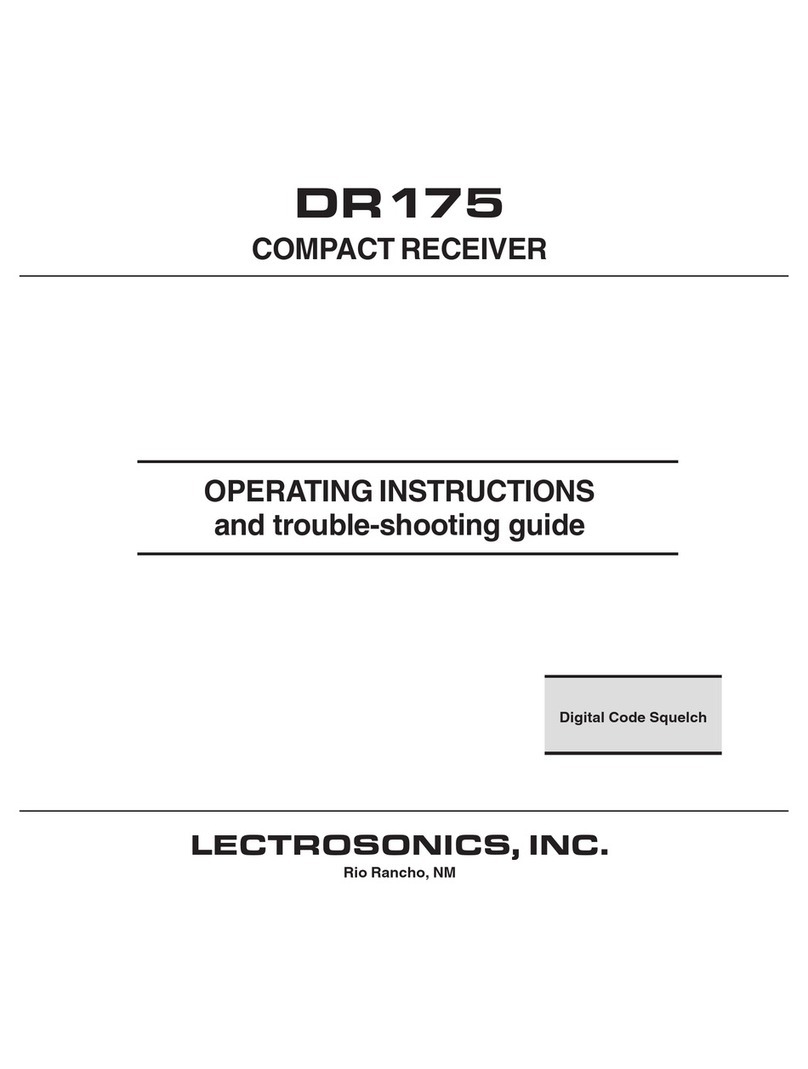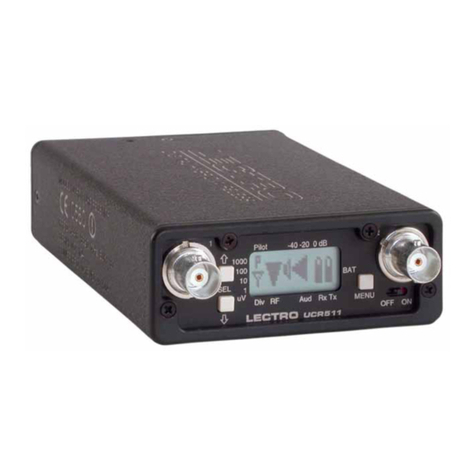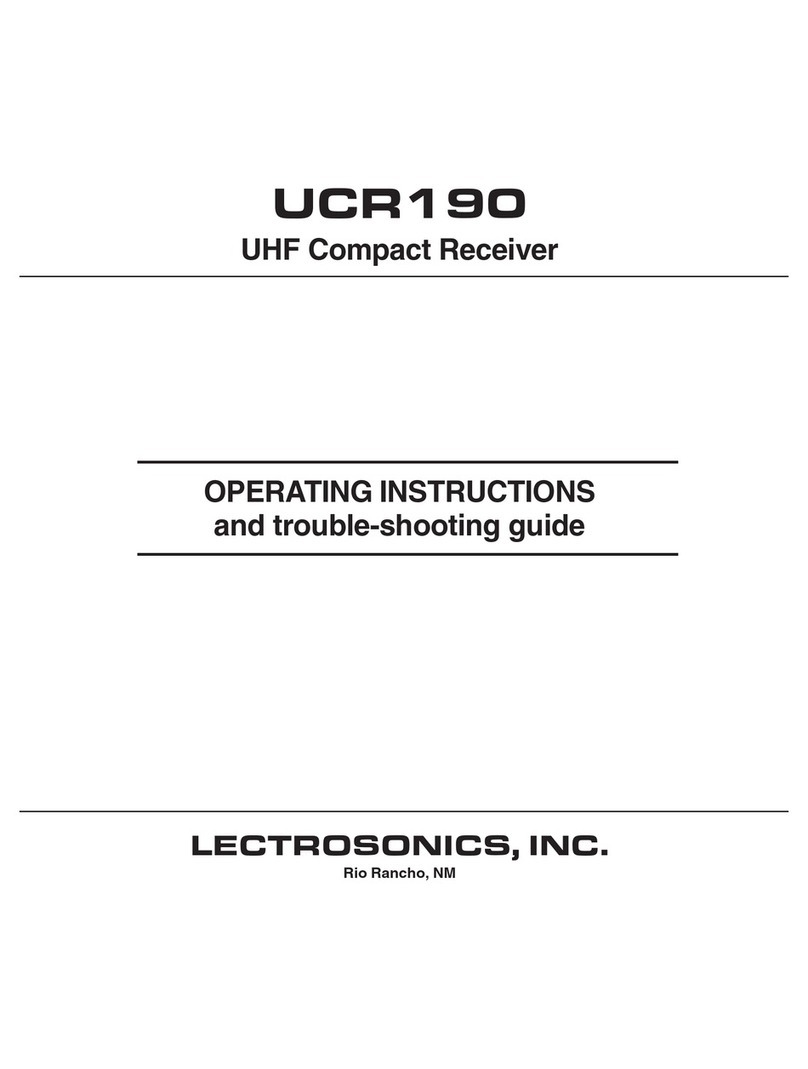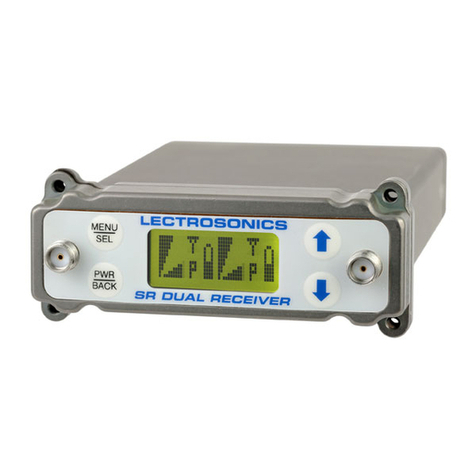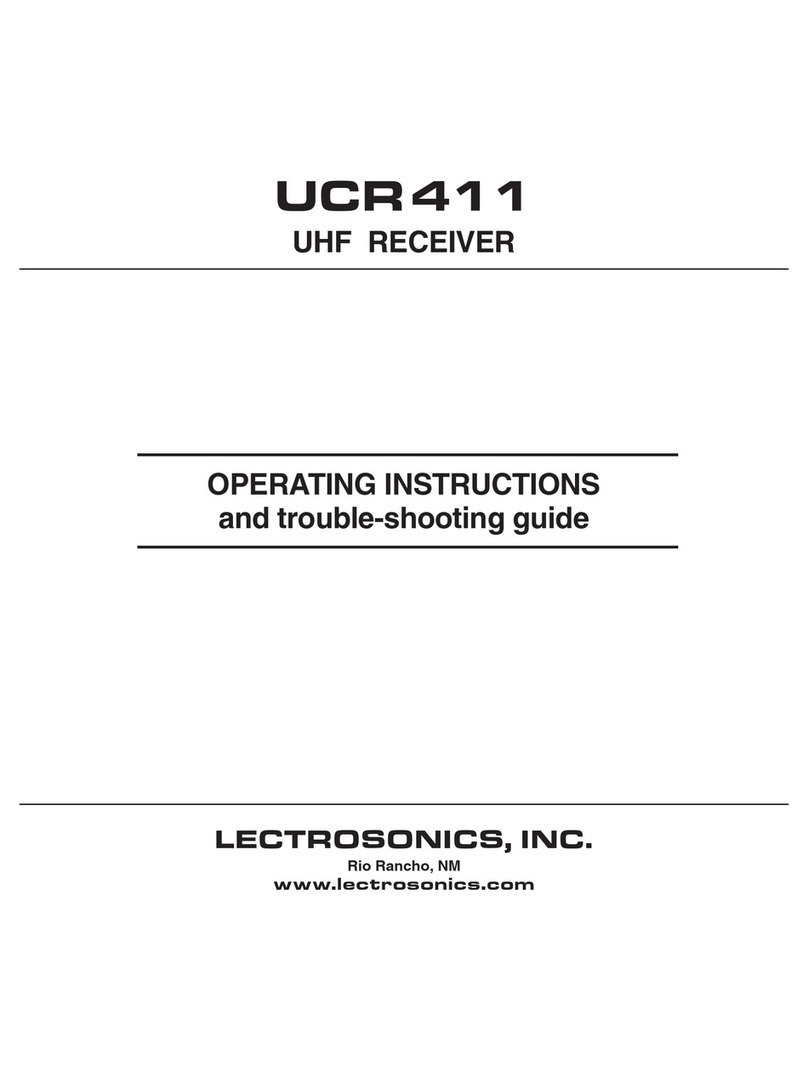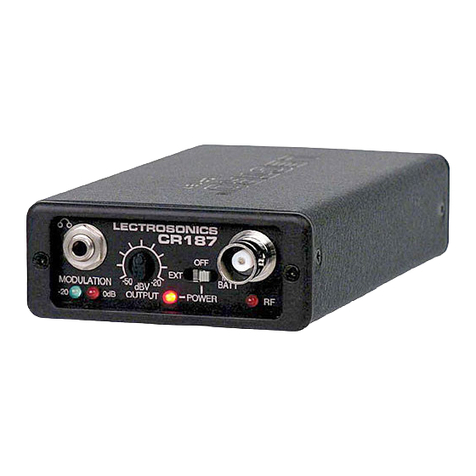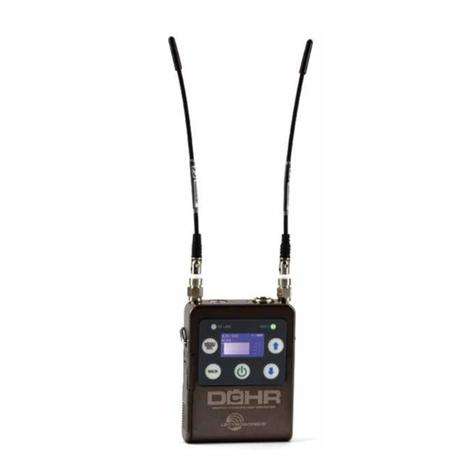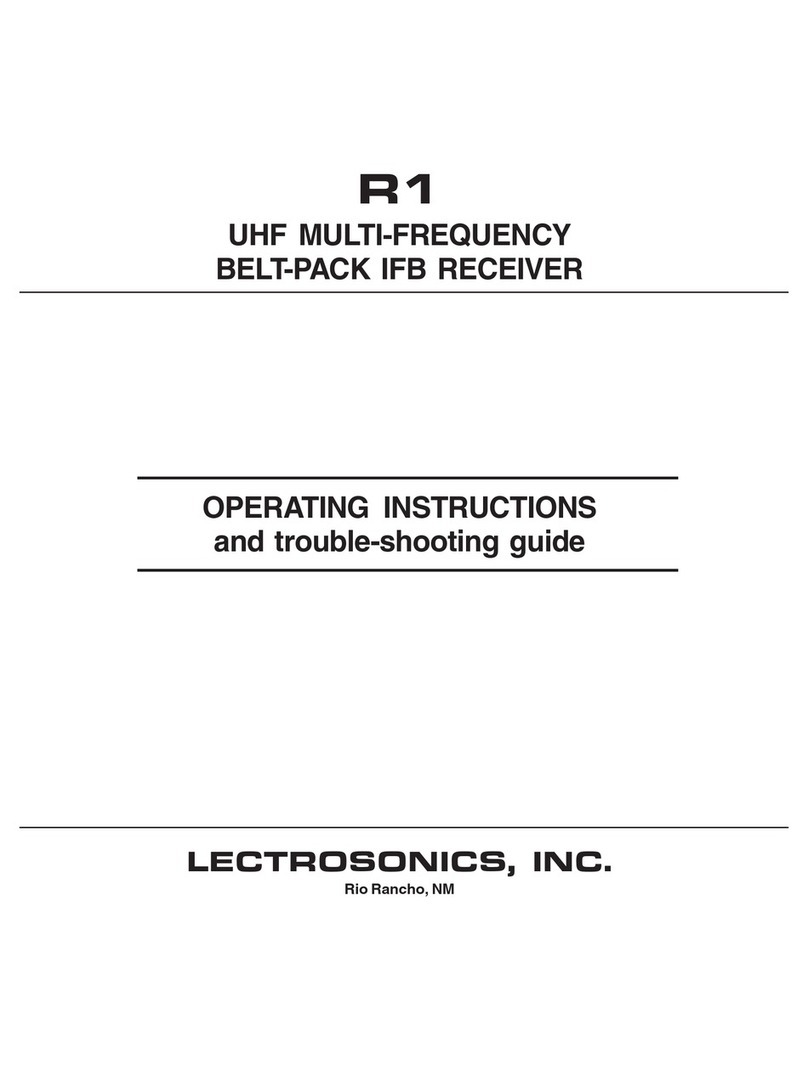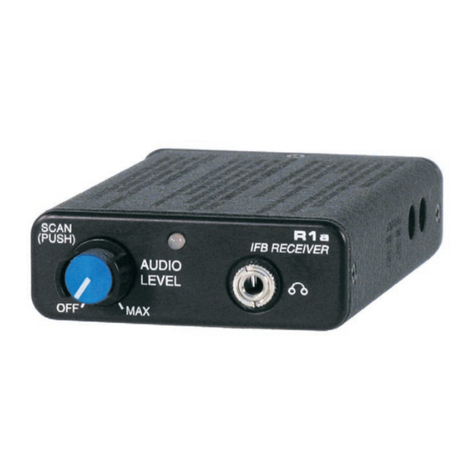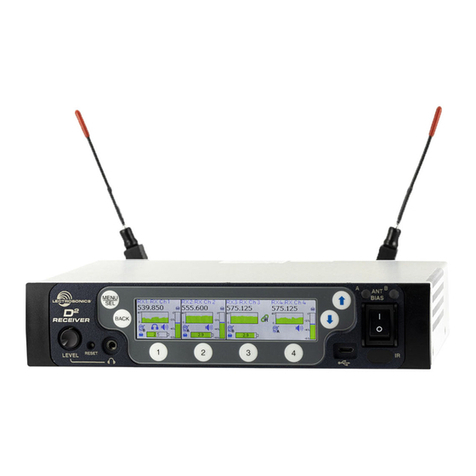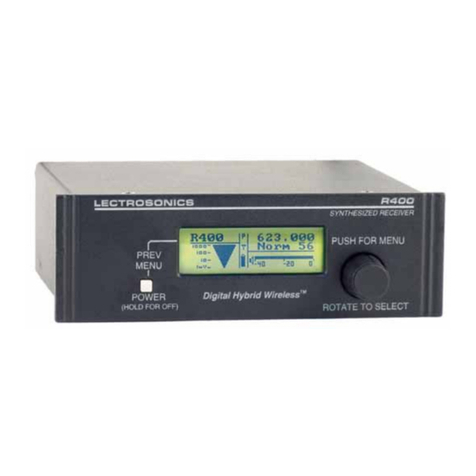www.lectrosonics.com 7
7. When all desired frequencies are stored switch the power to OFF for a
few moments, then switch back to ON. The unit will default to the chan-
nel number set by the switches and resume normal operating mode.
8. The first scan is made at low sensitivity and searches for only high level
transmitter signals to avoid intermods. If the receiver does not stop on
any frequency in the first scan, that means an IFB transmitter was not
detected. In this condition the LED will change from a fast blink to a slow
blink indicating the end of the scan. The complete scan should take 15
to 40 seconds.
9. A second scan at high sensitivity is initiated by depressing the knob
briefly at the end of the first scan to search for low level transmitter
signals. When the scan stops and the transmitter audio is heard, either
SKIP or STORE the frequency (step 4 or 5 above).
10. If the receiver still does not stop on any frequency, check that the trans-
mitter is ON. Also, if a frequency is not received or received but dis-
torted, some other signal may be interfering on that frequency. Change
the transmitter to another frequency and try again.
11. Switching the POWER to OFF during any mode simply terminates that
mode and returns the unit to normal operating mode when the power is
switched back to ON.
Note: If knob does not change frequencies or begin scanning when
pressed, check to see if its function has been changed.
Erase All 5 Channel Memories
1. With power OFF, depress the knob and turn the unit ON. Continue to
hold the knob down until the LED starts rapidly blinking. The memory is
now erased and the unit will go into scan/search mode.
2. Continue from step 3 above - Add New Frequency.
Multiple Transmitter Setup
When using this IFB receiver in a search mode, with two or more transmitters
running at the same time, the receiver may stop on a false signal under the
following conditions:
• Two transmitters are on and transmitting.
• The distance from the transmitters to the IFB receiver is less than 5 feet.
The false hits are caused by intermodulation or mixing in the front end of
the IFB receiver. At a 5 to 10 foot distance, the two carriers are so strong at
the receiver, that even this well designed front end will mix the carriers and
produce phantom frequencies. The IFB receiver then halts its scan and stops
on these false frequencies. All receivers will exhibit this type problem at some
transmitter power level and range. You notice false signals more with a scan-
ning mode receiver since it will find them all.
Prevention is simple. Do one of the following:
• Do the scan with only one transmitter on at a time. (Time consuming)
• Increase the receiver to transmitter distance to at least 10 feet. (Pre-
ferred)

